
Review on 📶 kuman 10pcs nRF24L01+ 2.4GHz Antenna Wireless Transceiver Module for Arduino Raspberry Pi Compatible K19 by Travis Vasquez

Fun and versatile little radio
Fun and versatile little radio. This radio is built on a chip from Nordic Semiconductor. It has many features and is highly customizable, which can also make it difficult to use properly. It offers automatic acknowledgment and automatic retransmission of relatively small data packets (up to 32 bytes) with CRC for error detection, supports over-the-air data rates from 250 Kbps to 2 Mbit/s, and reliable transmission between multiple devices on the same network. I ran two sets of tests with these radios. The first was an overloaded path that passed through numerous objects at a distance of about 30 feet, but not through doors or walls. The second path went through the walls and ceiling and was again about 30 feet long. Both tests were conducted in the presence of numerous actively used 2.4 GHz (WIFI/Bluetooth) and 5 GHz radios. I tested transmission reliability and effective bitrate (which is always much lower than on-air) for all three bitrates at each power setting. I set the radios to resend packets up to 15 times or until an ACK is received, send 1000 packets and calculate numbers based on the results. (Note: Be careful when setting the retransmission timeout to 250 kbps, as one of the allowed values is too low to get an ACK and therefore guarantee failure.) See attached graphs for the results were averaged over 10 runs in each case. The bottom line is that throughput is heavily dependent on over-the-air data rate and performance, often in unintuitive ways. If you don't have enough power, you won't get a signal. If you use too much power, you may still not get a signal. If you manage to get a signal by retransmitting, it often provides reliable transmission but can result in a significant drop in data transfer rate. The transmission channel is heavily attenuated, meaning that performance varies widely over time so true reliability may require a second layer of retransmission, and radios also check the channel from time to time to determine optimal settings. Radios provide reliable transmission over long distances with good data rates actual over-the-air speed 2 Mbps 0.54 Mbps 1 Mbps 0.35 Mbps 250 kbps 0.13 Mbps i Haven't analyzed the over-the-air log in detail, but a quick check shows these are realistic top speeds for this device. If you want better reliability or distance, antennas are important. The one built into these cards is functional but not good. Consider a design with an external antenna and/or low-noise amplifier if you're having trouble getting a reliable connection. Using a better antenna on at least one end of the line will likely solve most of your problems. Also note that Nordic Semiconductor recommends using a power shunt capacitor and includes it in its reference design. I think everyone uses this reference design, but Nordic Semiconductor suggests relatively good performance on the board. If you connect these boards with long wires or a weak power supply, expect problems that you may or may not be able to solve by adding a bypass capacitor between Vcc and Gnd on the radio itself.
- Great overall performance
- Doubtful
New products
Comments (0)
Top products in 📶 Network Transceivers

TRENDnet TC-TP1 Network Signal Testing Probe with Adjustable Volume, Speaker and Compatibility for TC-NT2

8 Review
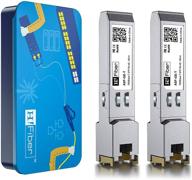
🔌 SFP Copper RJ45 Transceiver Gigabit Module 1000Base-T Compatible: Cisco GLC-T/SFP-GE-T, Meraki MA-SFP-1GB-TX, Mikrotik, Ubiquiti, Netgear, D-Link, TP-Link, Broadcom - 100 Reach, 2 Pack

8 Review
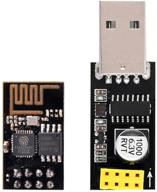
📡 Izokee ESP-01 Serial WiFi Transceiver Module with USB Converter, Compatible with Arduino

8 Review

MikroTik S+RJ10 Ethernet Transceiver

10 Review
Another interesting products
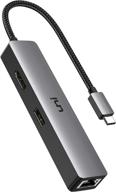
🔌 uni USB C Hub with Ethernet Adapter, 4K HDMI, Gigabit Ethernet, and 3 USB 3.0 Ports for MacBook Pro, iPad Pro, XPS

11 Review
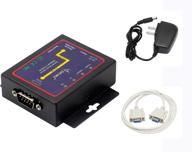
🔌 CERRXIAN RS232 to Ethernet Serial Device Server - TCP/IP Converter with 1Port DB9 RS232 Serial to Ethernet Connectivity

3 Review
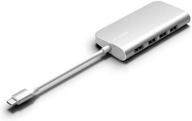
🔌 Juiced Systems Silver BizHUB USB-C Multiport Gigabit HDMI Hub with 3 USB 3.0 Ports, Gigabit Ethernet, 4K HDMI, SD/Micro SD, and USB-C Power Delivery

11 Review
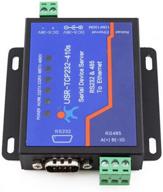
🔌 USR-TCP232-410s: RS232/RS485 Serial to Ethernet Adapter/IP Device Server with DHCP/DNS Support

4 Review

